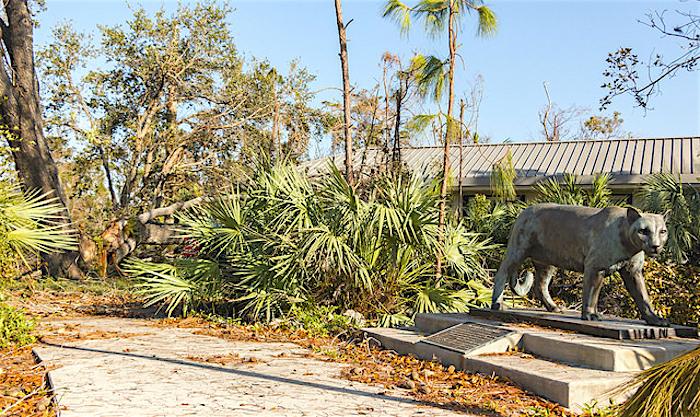
Everglades National Park Superintendent Pedro Ramos hopes to welcome visitors back to his park later this week/NPS
Everglades National Park looks like ... it was hit head-on by a hurricane.
While Hurricane Maria did head out to sea after raking the Caribbean and missed South Florida, Hurricane Irma a week earlier pummeled the state's southern tip, downing trees, clogging roads with vegetation, flooding buildings and ripping off roofs, tossing docks about as if they weren't anchored, and perching watercraft on beaches.
With the park's high season coming a bit later this fall, crews have been working across the park's frontcountry to make it possible for visitors to return and to provide housing for seasonal employees.
"Everglades National Park experienced the most impacts at the Gulf Coast District, in Everglades City, which is on the west coast of the peninsula," park Superintendent Pedro Ramos said Tuesday morning during a phone call. "Our visitor center and facility management buildings were destroyed and will most likely be condemned. ... There was a nearly 8-foot surge that came on land and devastated not only our facilities, but many of the community members’ homes, including some of our employees'.”
Modular buildings were being ordered to serve as temporary facilities for the visitors and park staff, he said.
"That will be a big deal for the park so that we can get ready and be prepared for the season, and also be an important part of the recovery of that particular community, which sufferd a lot of damage," said Superintendent Ramos.

Trails around Everglades National Park are littered with vegetation and downed trees/NPS
Another area in the park that was heavily impacted by Irma was Flamingo, where Guest Services, Inc., has a contract to provide lodging beginning late in 2019 with construction of 24 cottages and 20 eco-tents.
"The visitor center building experienced some significant roof damage, and we had all the roads down there covered with salty muck that came on from Florida Bay," said Superintendent Ramos. "We had about a 5-foot storm surge in that area. We also had impacts to our employee housing in Flamingo that we are dealing with already.
"All of that’s to say that we have our hands full, but we are on it and I expect that we will be ready for the season when it gets here. We expect to be opening more of the park to visitation to include the access to the Coe Visitor Center and important destinations, such as Royal Palm and the Anhinga Trail, as early as the end of this week."
It was the one-two punch of Hurricanes Katrina and Wilma in 2005 that destroyed the lodge and associated cabins at Flamingo. One aspect of lodging that Guest Services is expected to bring to Flamingo is "eco-tents" that can be taken down and stored in advance of storms. Additionally, said the superintendent, building codes implemented since 2005 should see that the cottages to be built can stand up to hurricanes like Irma.

Specially trained arborists were working throughout Everglades National Park's frontcountry to save damaged trees/NPS
"The new concessionaire coming in will be building overnight accommodations and a restaurant to building codes that are in place to better sustain not only the wind damage but also storm surge," he said. "In other words, facilities that are properly elevated to certain feet, and roofs that are tied to structures in a particular way, meeting the new code, which is a much better code than the one we had years ago.”
Interestingly, the superintendent said the park's backcountry seems to have evolved to handle hurricanes to a certain degree.
"I have been out in the field, I have flown it, and while there is a significant amount of trees that went down, particularly in the frontcountry, when you fly over the backcountry, I can’t help but to think that this system is really well-built (naturally) to sustain and make it through natural events like this," he said. "While there are trees down, I have to tell you looking at this park, as flooded as it looks right now, with the majority of the trees throughout the entire landscape still standing, it’s a spectacular sight.”
While the National Park Service's focus right now is to get Everglades and the other park units damaged by the hurricanes back up and running, assessments are getting under way to see how the natural resources -- the wildlife, birdlife, vegetation, sloughs, etc. -- weathered the storm.
"We’re already out there taking a look at what the ecological impacts longer term may be," Superintendent Ramos said. "We’re just beginning to do that kind of work. Time will tell.
"It takes a while, usually, for us to have a really good handle on those impacts. But from my personal observations, I see a lot of birds, they are in good numbers on the sides of the roads feeding, and in the frontcountry, which has been good to see. But monitoring is what we’re doing now so that we can really understand what the impacts have been to wildlife and also to vegetation as we move forward.”



Add comment